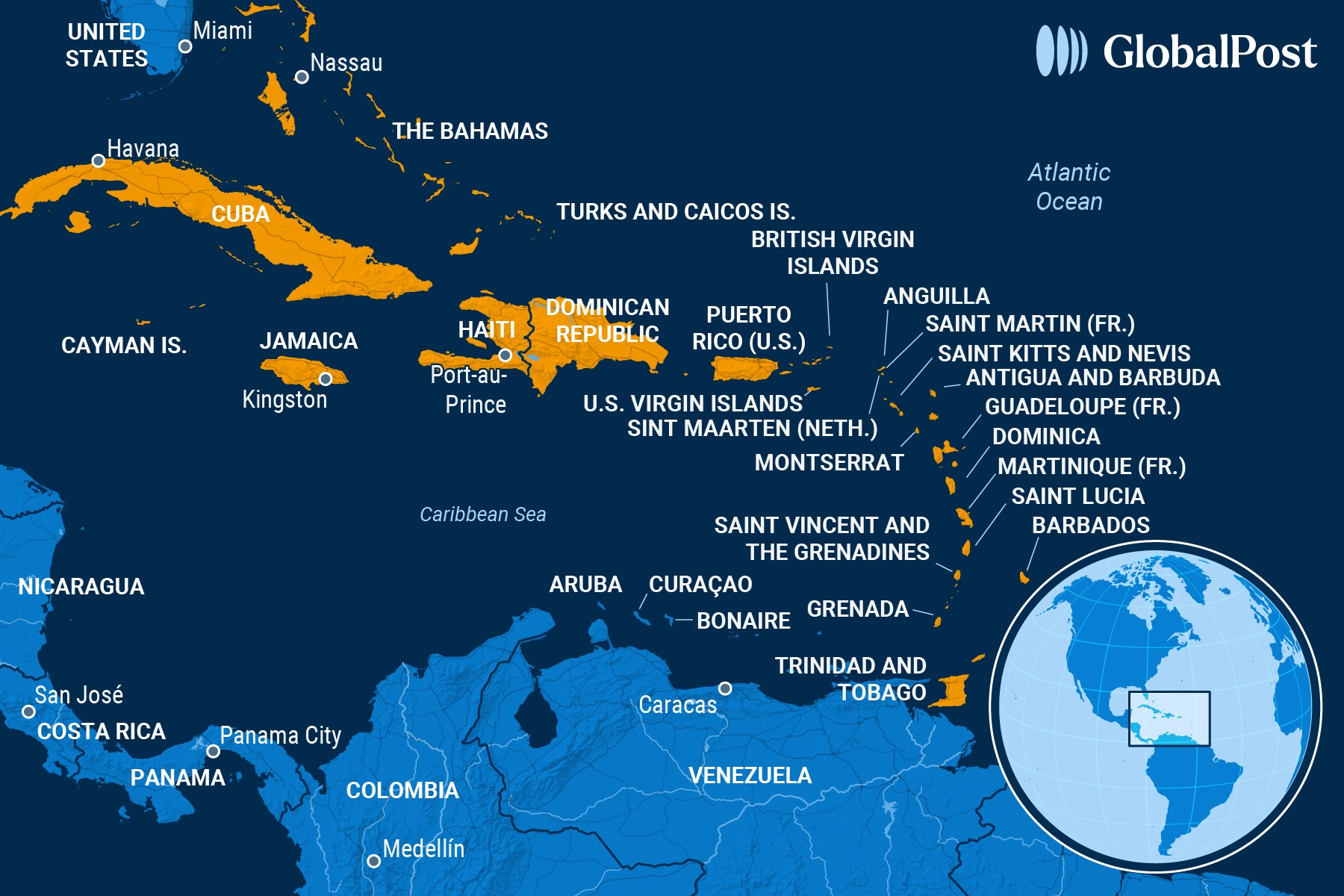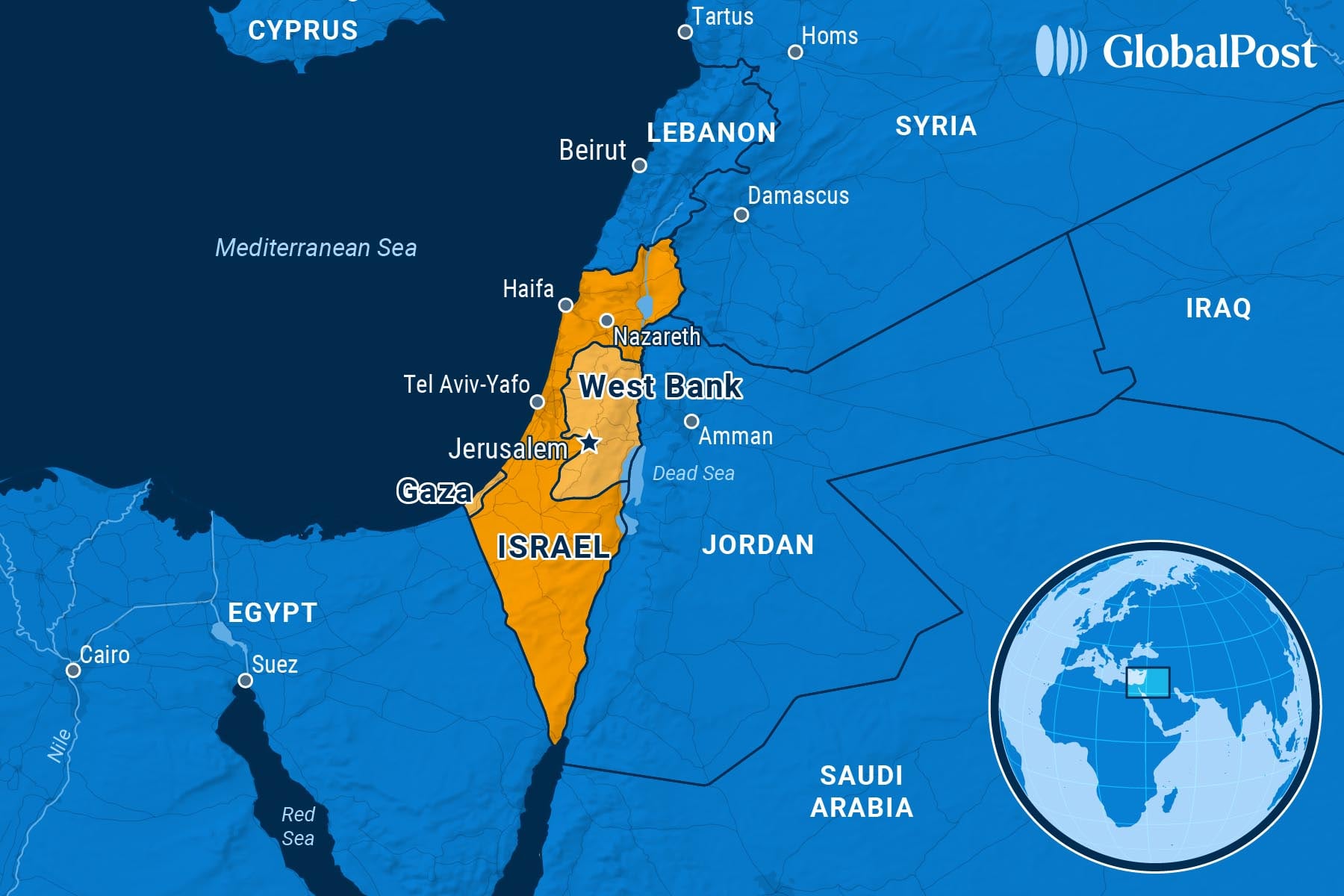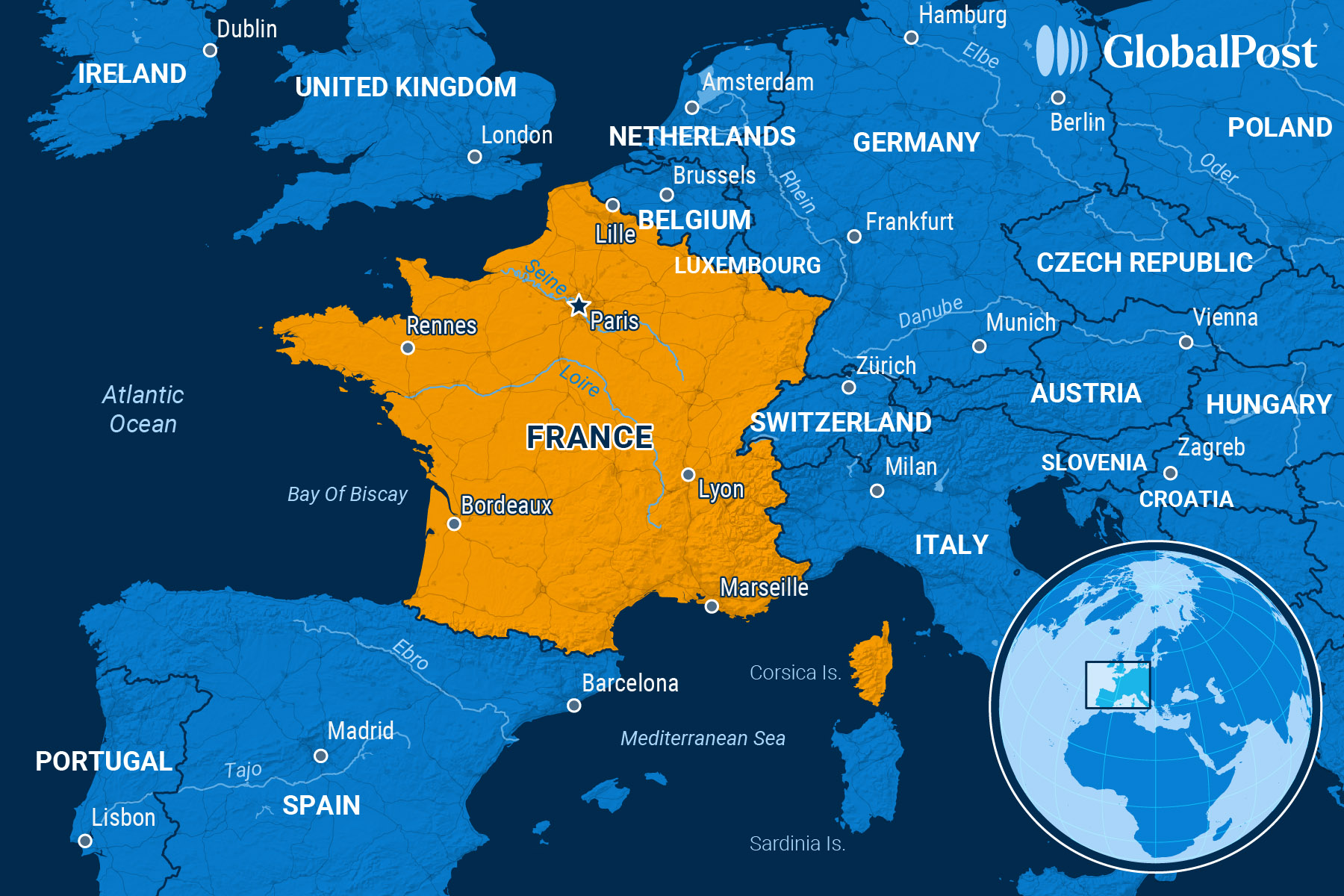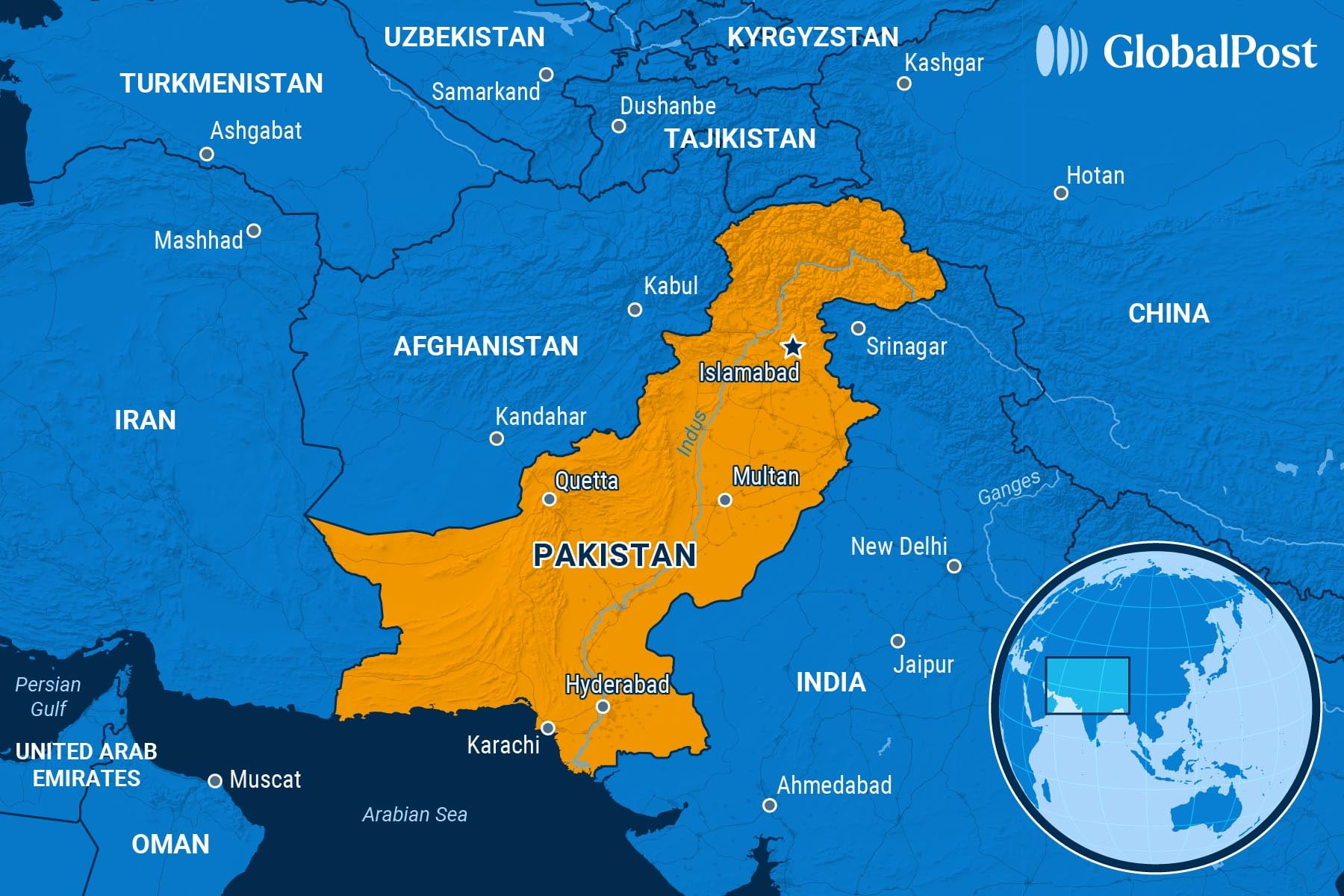Caribbean Countries, Worried About US, Shore Up Their Own Bloc
NEED TO KNOW
Caribbean Countries, Worried About US, Shore Up Their Own Bloc
THE CARIBBEAN
 Leaders from the Caribbean nations of Barbados, Belize, Dominica, and St. Vincent and the Grenadines recently signed a deal to allow their citizens to reside and work in each other’s territories without visas or work permits.
Leaders from the Caribbean nations of Barbados, Belize, Dominica, and St. Vincent and the Grenadines recently signed a deal to allow their citizens to reside and work in each other’s territories without visas or work permits.
The agreement, which became effective on Oct. 1, resembles similar freedoms in the European Union’s single market that not only allow for flexible labor markets but also give foreigners from member states access to services, making freedom of movement more convenient, reported MercoPress. Previously, citizens of the Caribbean Community (CARICOM), a region group of 15 Caribbean countries, could work in each other’s countries but not necessarily access public services.
The move cuts against global trends seeking to erect stricter borders to keep foreigners out, noted the Gleaner, a Jamaican newspaper.
“We are virtually the same people,” David Comissiong, the Barbadian Ambassador to CARICOM, told the Guardian. “We have no historical animosities against each other, and we are very similar culturally. So, this is a breakthrough, even though it’s only four countries. The idea is, once the four countries make the start and perfect this regime, that others will join.”
Keeping well-educated young people in the region was among the most attractive benefits of the deal, reported Firstpost. Currently, those sought-after workers often opt to leave the Caribbean in search of more attractive jobs in Canada, Europe, and the United States.
The move makes the four countries among the most integrated in the world, explained Patrice Quesada, who oversees the International Organization for Migration’s operations in the region, in an opinion article. The agreement also paves the way to deliver the labor necessary to exploit newfound oil deposits in Guyana and provide a framework to give economic opportunities to Haitians who are seeking to leave their impoverished, crime-ridden country, Quesada added.
Meanwhile, the deal allows for local governments to bar criminals and others from crossing their border due to national security concerns, added the Associated Press. Leaders have also warned that they will need to see whether newcomers put too much financial pressure on their own country’s public services, noted the St. Kitts and Nevis Observer.
That said, Jamaican leaders have already expressed their interest in joining the deal, citing how Jamaicans frequently work in nearby countries – often illegally – while ethnic communities within Jamaica can trace their roots to other states and communities in the region, noted the Jamaica Observer.
Another reason for moving forward on regional integration are economic worries, particularly regarding trade. At a conference earlier this year, Caribbean officials said that it is important to diversify to build “economic resilience” in light of new “US first” polices, particularly tariffs.
At the meeting, Wayne McCook, assistant secretary general for the CARICOM Single Market and Trade from Jamaica, emphasized the region’s vulnerability to changes in US trade policy due to its heavy reliance on American markets, reported Barbados Today. He warned that the use of tariffs as tools by the US to promote its own economic and national security poses significant challenges for the region.
“The focus on tariffs as economic weapons presents risks for Caribbean economies deeply dependent on US trade,” McCook said.
Meanwhile, the dependence on the US is very risky, added W. Andy Knight, former director of the Institute of International Relations at the University of the West Indies, Trinidad & Tobago. “It’s convenient to trade with the US, but over-reliance on a single supplier is dangerous,” Knight argued. “Trump’s policies should serve as a wake-up call for the Caribbean to diversify suppliers and explore new markets, reducing economic vulnerability.”
THE WORLD, BRIEFLY
Israeli Hostages and Palestinian Prisoners Released as Gaza Ceasefire Holds
ISRAEL/ GAZA/ WEST BANK
 Celebrations erupted in Israel and Gaza Monday after Hamas released the 20 living hostages held in Gaza, and Israel freed hundreds of Palestinian prisoners, both moves part of a ceasefire agreement halting two years of war that has killed tens of thousands of Palestinians, and devastated the enclave, the Associated Press reported.
Celebrations erupted in Israel and Gaza Monday after Hamas released the 20 living hostages held in Gaza, and Israel freed hundreds of Palestinian prisoners, both moves part of a ceasefire agreement halting two years of war that has killed tens of thousands of Palestinians, and devastated the enclave, the Associated Press reported.
On Monday, the loved ones of the hostages gathered at a square in Tel Aviv and broke into wild cheers after Israeli media reported that the first batch of hostages had been transferred to the Red Cross, the Washington Post reported.
Later in the day, the living Israeli hostages, all men, arrived in Israel, and were transferred to hospitals, where they were reunited with their families.
Under the terms of the agreement, Hamas has pledged to release the bodies of the remaining 28 hostages, and said it would release the bodies of four immediately. However, it added that it would not meet a 72-hour deadline set by the deal because it would not be able to recover the rest of the remains that quickly.
Also on Monday, buses transporting hundreds of freed Palestinian prisoners arrived in the West Bank city of Ramallah, where they were met by large crowds celebrating their release. Israel said it freed 1,900 prisoners. Other crowds greeted prisoners in the southern Gaza city of Khan Younis.
The prisoners to be released by Israel under the deal include 250 Palestinians serving life sentences, plus 1,700 more held without charge. Imprisoned Palestinian leader Marwan Barghouti, whose release has long been sought by Palestinians, will not be released, Al Jazeera added.
Now, under the deal, humanitarian groups are poised to surge in aid into Gaza, where parts of the enclave have been grappling with famine.
The ceasefire also held in Gaza, giving hope to both Israelis and Palestinians that the deadly conflict is on its way to ending. Addressing the Israeli legislature, the Knesset, on Monday, Israeli Prime Minister Benjamin Netanyahu said that he was “committed to this peace.”
US President Donald Trump also spoke to lawmakers in the Knesset on Monday, telling reporters afterward that “the war is over.” He later traveled to Sharm el-Sheikh, Egypt, to host a summit along with Egyptian President Abdel-Fattah el-Sissi and attended by more than 20 world leaders, focusing on the details of the US-proposed ceasefire deal and postwar plans for Gaza.
Netanyahu was not in attendance. Hamas also did not participate.
Despite the hostages and prisoners’ release, many details of the second phase of the deal are still to be negotiated, including the structure of post-war Gaza and the future role of Hamas. The next stage is expected to include a gradual withdrawal by Israel, the disarmament of Hamas, the creation of new security and governance structures, and the reconstruction of the territory.
Currently, the Israeli military has withdrawn from much of Gaza City, Khan Younis and other areas, while remaining in the southern city of Rafah and towns near the northern border of Gaza’s far north and other border areas.
The war began after the Hamas-led attacks on Israel on Oct. 7, 2023 that killed more than 1,200 people and left more than 250 as hostages. It has killed 67,000 people in Gaza, according to enclave’s health officials, displaced about 90 percent of its 2 million residents and created a severe humanitarian crisis. It also sparked other conflicts in the region, triggered worldwide protests, led to international condemnation of Israel, and generated allegations of genocide, charges Israel denies.
Newly Reappointed French Prime Minister Tries Again
FRANCE
 French Prime Minister Sébastien Lecornu presented his new cabinet on Sunday night, keeping top posts mostly unchanged, a move that threatens to bring down his government again, CNN reported.
French Prime Minister Sébastien Lecornu presented his new cabinet on Sunday night, keeping top posts mostly unchanged, a move that threatens to bring down his government again, CNN reported.
Lecornu, who resigned as prime minister last Monday after only 27 days in office, was reappointed by French President Emmanuel Macron on Friday. He pledged to form a government of “renewal and diversity,” but instead maintained his previous picks for most of the choice jobs.
The new government is finding it difficult to get its so-called austerity budget for next year approved by France’s deeply divided parliament: The budget cuts France’s massive public spending deficit, which is concerning markets and international institutions, Politico wrote.
The budget proposal must be ready by Wednesday to adhere to constitutional deadlines, and having a cabinet is a legal precondition for presenting the plan.
Meanwhile, it is unclear whether Lecornu’s new government will last – his previous cabinet was in place for just 14 hours.
Both the far-left party France Unbowed (LFI) and the far-right National Rally filed motions of no confidence on Monday that could bring the government down by the end of the week. Together, the two parties hold more than a third of the seats in the National Assembly.
Meanwhile, the Socialist Party said it will decide on its support for Lecornu’s cabinet depending on his proposals, particularly concerning the suspension of Macron’s controversial pensions reform and the introduction of a wealth tax, proposals rejected by the right. The Socialists’ support will be crucial for the survival of the new government.
Lecornu said on Sunday that he does not rule out resigning again.
“If the conditions were no longer met again, I’d leave,” he told La Tribune Dimanche. “I’m not going to just go along with whatever.”
If Lecornu fails to obtain parliamentary support, France would have to pass emergency temporary measures to authorize spending from Jan. 1 until a full budget is approved.
Pakistan Halts Border Trade After Clashes with Afghanistan
PAKISTAN
 Pakistani forces were on high alert along the Afghan border Monday, following violent clashes over the weekend with Afghan forces that resulted in dozens of deaths and marked the deadliest conflict between the two neighbors since the Taliban returned to power in 2021, Reuters reported.
Pakistani forces were on high alert along the Afghan border Monday, following violent clashes over the weekend with Afghan forces that resulted in dozens of deaths and marked the deadliest conflict between the two neighbors since the Taliban returned to power in 2021, Reuters reported.
Afghan troops reportedly fired on Pakistani army posts along the northwestern border on Saturday night and captured several of the posts. The attack followed the Taliban government’s accusation that Pakistan had carried out airstrikes on Afghan territory, including in the capital, Kabul, earlier this week, the Guardian noted.
Pakistan responded on Sunday with retaliatory attacks, firing on, and raiding, Afghan posts along the border.
The Pakistani military said that 23 of its soldiers were killed in the clashes, while the Taliban said nine of their fighters were killed, according to Reuters.
Meanwhile, Pakistan closed crossings for vehicles and pedestrians along the 1,600-mile border, halting trade and leaving scores of loaded vehicles stranded on either side, causing economic losses to both countries.
Pakistan is the main supplier of goods and food supplies for landlocked, impoverished Afghanistan.
Both sides reported that the border area was mostly calm Monday.
These latest clashes signal a worsening of relations between the former allies, which have become increasingly tense amid accusations that Afghanistan is a haven for Pakistani Islamist militants – known as Tehreek-e-Taliban Pakistan (TTP) – carrying out deadly attacks on Pakistani soil.
The Taliban denied the presence of Pakistani militants in Afghanistan.
On Sunday, US President Donald Trump told reporters that he intends to focus on this conflict shortly.
Meanwhile, China, which borders Afghanistan and Pakistan, has tried to act as a mediator between the two, expressing serious concerns about the latest clashes.
DISCOVERIES
Pop Goes the Icy Lid
The remote tundra of western Siberia looks like the planet has burst from beneath its own skin.
Giant craters – some more than 150 feet deep and almost 100 feet wide – scar the Yamal and Gydan peninsulas, the result of explosive methane eruptions that have puzzled scientists for more than a decade.
Now, new research has revealed what’s really happening beneath Siberia’s permafrost.
In their study, lead author Helge Hellevang and his team found that these so-called gas-emission craters (GECs) form when heat and methane rise from gas reservoirs buried deep beneath the Siberian ground, traveling upward along fault lines until they hit frozen soil.
These gases collect beneath the permafrost in pressurized pockets, sealed off by a thick, icy layer that acts like a cork in a bottle – until it finally gives way in a massive explosion that hurls debris hundreds of feet into the air and leaves behind steep, cylindrical voids.
Hellevang and his colleagues reviewed both Russian and English-language studies on the craters and used computer models to simulate how they form, according to New Atlas.
Their findings showed that the fault-riddled terrain allows deep gas to seep upward, accumulating in cavities just below the permafrost. When warming temperatures or nearby lakes thin the frozen seal, the trapped gas suddenly bursts through with explosive force.
Since the first crater’s discovery in 2014, anywhere from eight to 20 have been identified across the two peninsulas. But these scars don’t last long.
“These craters degrade quickly into lakes as they melt or fill with water, so it is possible that we have not noticed all of them forming before they degraded,” Lauren Schurmeier, a researcher at the University of Hawaii who has published a separate study on the phenomenon, told the New York Times.
The new study also explores the role of climate change in forming these craters, according to the authors.
Warming doesn’t directly cause the blasts but primes the landscape for them by thinning frozen ground along fault lines and creating weak spots above trapped gas.
“This suggests that GECs can potentially also form elsewhere, but require connection to natural gas generation and accumulations below continuous permafrost,” the researchers wrote.
